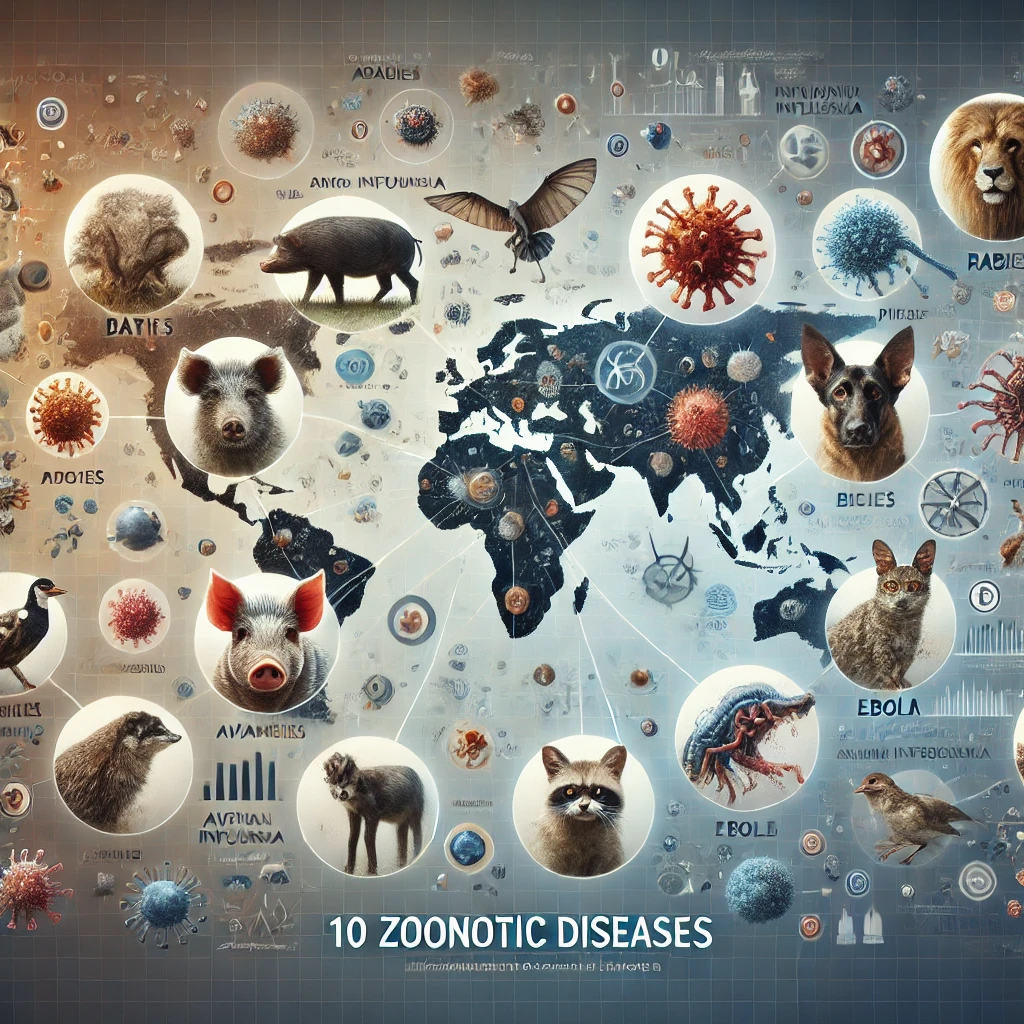What are 10 Animal-to-Human Diseases?
Article Source: MDPI - Zoonotic Diseases Overview

Why you should care
Zoonotic diseases are infections that pass from animals to humans. These diseases are important to understand because they make up over 60% of all human infectious diseases. From the flu to COVID-19, zoonotic diseases affect millions of people each year. Knowing which diseases are zoonotic can help prevent outbreaks and protect both humans and animals.
Answering the question… What are 10 Animal-to-Human Diseases?
The article identifies 10 zoonotic diseases, including rabies, Ebola, Zika virus, Lyme disease, and avian influenza. Zoonotic diseases are caused by viruses, bacteria, or parasites and can spread through contact with animals, insect bites, or contaminated food. Every year, zoonotic diseases cause millions of deaths worldwide. For example, rabies kills about 59,000 people each year, mostly in rural areas.
How was the study done?
The study reviewed data from previous outbreaks and scientific literature on zoonotic diseases. Researchers analyzed trends in disease transmission, focusing on how human interaction with animals, such as farming and urbanization, increases the risk of zoonotic outbreaks. The study also examined the global impact of these diseases and how human activities have contributed to their spread.
What was discovered?
- Over 60% of all human diseases are zoonotic, meaning they originate from animals.
- Some of the most dangerous zoonotic diseases include rabies, with 59,000 deaths annually, and Ebola, with outbreaks causing 50-90% fatality rates.
- COVID-19 has had a significant global impact, infecting over 200 million people worldwide as of the study's data.
- Lyme disease is a growing concern, with cases increasing by 300% in some regions over the last decade due to more interactions between humans and tick populations.
- Zika virus spreads rapidly through mosquitoes, affecting 1.5 million people in a recent outbreak, causing severe birth defects in thousands of cases.
- The study highlighted that deforestation, urbanization, and wildlife trade are major factors contributing to zoonotic disease outbreaks.
- Vaccines are available for some zoonotic diseases like rabies and avian influenza, but others, like Ebola, require rapid response and containment measures to prevent widespread transmission.
Why does it matter?
Understanding zoonotic diseases is crucial to preventing future pandemics. As human populations grow and interact more with animals, the risk of zoonotic disease outbreaks increases. By improving surveillance, promoting responsible farming and wildlife trade practices, and developing vaccines, we can reduce the threat of these diseases. Protecting ourselves from zoonotic diseases also means protecting our environment and the animals we share it with.
